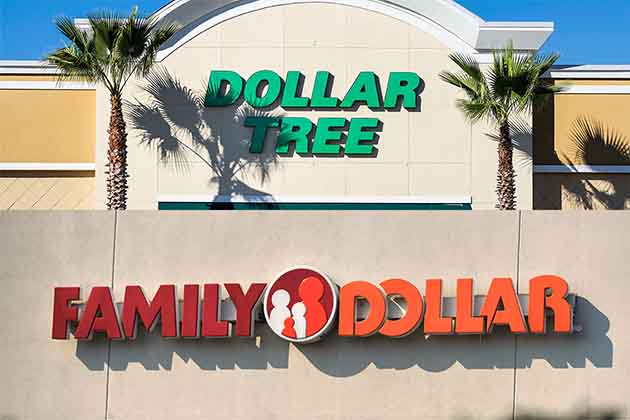Dollar Tree and Family Dollar
Party City

Party City has had a hard time staying afloat after net losses. Recently, the retailer made a choice to swap helium sources and close 45 stores to combat the decline in sales. While Party City is healthier than other retailers, but that doesn’t mean the store is completely in the clear.
Sadly, Party City could throw its final party sooner rather than later. Where else can you get unlimited party supplies in every color wave thirty minutes before people arrive at your doorstep? There aren't many places like it. Sure, Amazon is quick to ship (and probably the reason why Party City is singing it's last "Happy Birthday"), but it's not the same.
GAP

The GAP has been seriously struggling, so much so that they’re splitting up their business. Early 2019, it was announced that Old Navy would become a separate firm as GAP closes 230 stores. This move is probably due to the fact that Old Navy is GAP’s strongest brand, and it’s trying to stay afloat amid retail trouble.
Against the backdrop of shifting consumer preferences to sustainability and ethically produced products, it's not surprising that the GAP has been struggling. By focusing on its strongest brand, the GAP may be able to turn things around and remain competitive in an ever-changing retail landscape. Only time will tell whether this strategy will pay off.
Overstock

You’d think Overstock wouldn’t have a hard time given that they’re an online retailer, but it’s no-go. Overstock has been trying to sell its e-commerce unit since December, and buyers aren’t chopping at the bits. It’s likely due to the fact the company has had dropping revenues with growing debt.
One major issue is that Overstock.com has been struggling to compete with larger e-commerce giants such as Amazon and Walmart. These companies have much greater resources and are able to offer lower prices and faster delivery, which has made it difficult for Overstock.com to attract and retain customers.
Office Depot

Office Depot is one of the big names that’s been losing to online retailers—it’s just cheaper to buy office supplies online. The company tried to merge with Staples, but the plan was rejected by those fearful of a copy paper monopoly. Lagging sales and $1 billion in debt could spell the end for Office Depot.
Aside from online shopping, another factor contributing to Office Depot's struggles is the changing nature of work itself. As more people work remotely or from home, there is less demand for traditional office supplies and furniture. This trend has been exacerbated by the COVID-19 pandemic, which has led to an even greater shift towards remote work.
Fred’s

Fred’s has been closing stores steadily for a while now. Recently, it announced the sale of 185 of it’s 350 pharmacies to Walgreens. Now, Fred’s has hired a new financial advisor in the hopes it can restructure and save itself from bankruptcy.
The company has been dealing with turnover in its executive leadership, which has led to instability and uncertainty about its future direction. This has made it difficult for the company to execute on its strategy and make the necessary changes to improve its financial performance.
Claire’s

Claire’s is a “trendy” retailer aimed at teens. The only issue is that they’re stuck in the ’90s. The retailer filed for bankruptcy and exited in October 2018, but sales have remarkedly declined. Claire’s also closed around 1,600 stores, and many of the ones left over are in malls. Considering malls are closing at an alarming rate, it’s only a matter of time.
One major issue for Claire's has been increased competition from fast-fashion companies. These companies have greater resources and are able to offer lower prices and more trendy products to customers. Even worse, Claire's has been facing legal issues related to the safety of its products. In 2017, the company was forced to recall several makeup products after they were found to contain asbestos. This led to negative publicity and hurt the company's reputation.
Macy’s

Macy’s has been struggling to avoid bankruptcy for a while now. More recently, it’s shrunk the number of stores it has, but the company can’t keep up. Macy’s stocks have been hit hard, and many financial experts don’t see a way out for the giant retailer.
Macy's has been facing increased competition from other retailers, particularly discount stores like Walmart and Target, which have been expanding their offerings of clothing and home goods. This has put pressure on Macy's to offer lower prices and promotions, which has hurt its profit margins.
J.C. Penny

J.C. Penny is one of the three major department stores that are struggling. The CEO left in hopes of a more secure position, and it seems like that was a great decision for him. The large retailer filed for bankruptcy soon after. As an attempt to stay afloat, the bankruptcy is a restructure plan that will close 240 stores by 2022. This is 30% of their total locations, so it's a pretty big hit. They're hoping not to go under, but we'll see.
In 2020, the store filed for Chapter 11 bankruptcy protection. However, the company was able to emerge from bankruptcy later that year after it reached a deal with its creditors and landlords to reduce its debt load. It has been working to turn its business around by focusing on its e-commerce offerings and rebranding itself as a more modern and relevant retailer.
Kohl’s

Kohl’s has had recent stock issues. At the start of the year, sales were beginning to drop. Then they had some good news: Shopko closing most (if not all) its stores. This means good news for the retailer, although this could just be temporary. Unless Kohl’s makes some changes to improve sales, it may be headed in the same direction as Shopko.
The company has faced declining sales and profits, and in 2020, it announced plans to cut about 15% of its corporate workforce and reduce its store footprint. However, Kohl's has also been taking steps to adapt to the changing retail landscape and improve its financial performance.
Applebee’s

Applebee’s has spent a good chunk of change renovating its restaurants and expanding its menu to attract new customers. Unfortunately, it doesn’t seem to be working. The chain has been steadily closing stores since 2016. This makes it hard for Applebee’s to find investors, so it could be on the downswing.
Many restaurants, including Applebee's, were forced to temporarily close their dining rooms or operate at limited capacity during the pandemic, which resulted in declining sales and revenue. However, many restaurants were able to pivot to offering takeout and delivery services to stay afloat during this time.
Sears

People have been predicting Sears’s fall from grace for a while now, and it’s finally here. It seems like Sears is edging closer and closer to bankruptcy with every passing month. The company has been selling off brands in the hopes that it can survive a bit longer, but the reality of the situation is that it’s bleeding income.
the parent company of Sears and Kmart department stores, filed for Chapter 11 bankruptcy protection on October 15, 2018. The company had been struggling for years due to declining sales, increasing competition from e-commerce retailers, and a heavy debt load. At the time of the bankruptcy filing, Sears had over 700 stores and more than 68,000 employees. The bankruptcy was one of the largest in retail history, and it resulted in the closure of hundreds of stores and the loss of thousands of jobs.
Toms Shoes
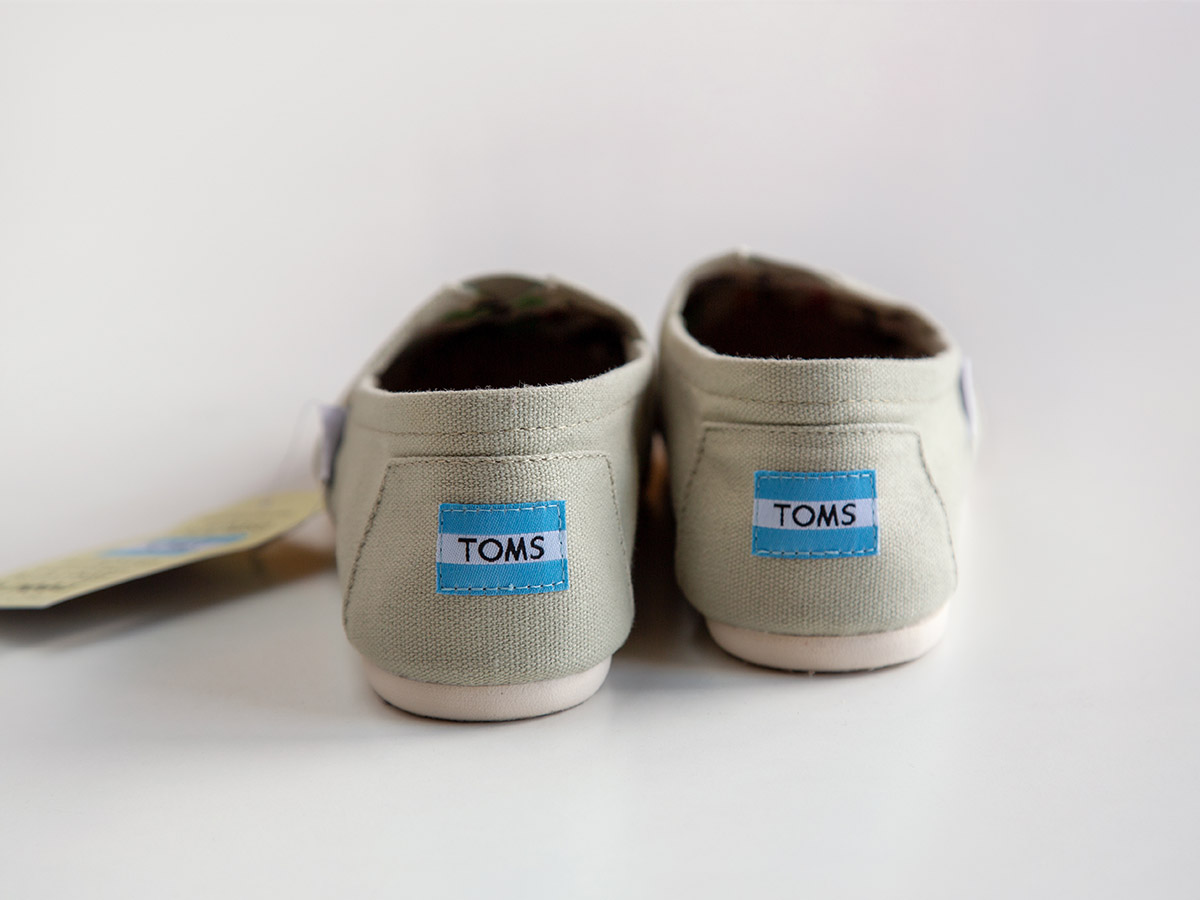
Toms may have comfortable footwear, but people aren't buying. The company has had a tough time trying to pay down five years of debt after scoring a $313 million investment from a private-equity firm, Bain Capital. TOMS is known for its "one for one" model, where the company donates a pair of shoes to a child in need for every pair of shoes that it sells. However, the pandemic has disrupted supply chains and slowed down sales.
TOMS has been expanding its product offerings beyond footwear and eyewear to include apparel and accessories, which has helped to diversify its revenue streams. The company has also been working to improve its sustainability practices and reduce its environmental impact, which is increasingly important to consumers.
Quiznos
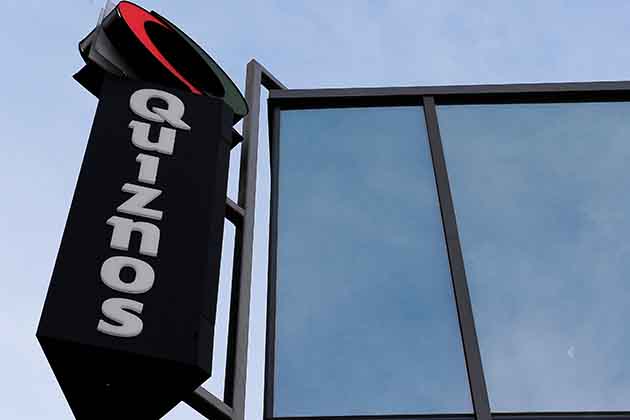
Some investors saw Quiznos as a horrible business model, and those people may have been right. The company has been struggling to compete against big names like Subway, Firehouse Subs, and Jimmy John’s. An investment company purchased Quiznos in 2018, but we’ll have to wait and see if there’s an impact.
Years prior, Quiznos filed for Chapter 11 bankruptcy protection in March 2014, citing declining sales and high debt levels. At the time of the bankruptcy filing, the company had approximately 2,100 locations worldwide, but many of those locations were struggling to generate enough revenue to cover their expenses.
Pizza Hut

One of the biggest hits recently was the bankruptcy of one of the largest Pizza Hut franchisees. NPC International filed for Chapter 11 bankruptcy following the prolonged shutdown of COVID-19. A total of 1,200 Pizza Huts are going to shut down in 27 states.
This accounts for nearly 40,000 employees. The group has been struggling with the pandemic and shutdowns since everything began. Overall, it’s accrued a debt of nearly $1 billion. There are other franchises, but NPC International isn't happy with Pizza Hut. The franchisee is threatening to shut down the remaining 900 stores unless they change their policies.
Victoria’s Secret

Victoria’s Secret may have had great success in the late ’90s and early 2000s, but things have recently changed. The CEO made controversial comments about transgender and plus-size models, and sales have taken a huge hit. On average, Victoria’s Secret has closed around 15 stores per year.
The company announced that it would be focusing more on e-commerce as consumers increasingly shift towards online shopping. In addition to these challenges, Victoria's Secret has faced criticism over its marketing and business practices, including allegations of harassment and discrimination, and criticism over the company's narrow definition of beauty standards.
Regal Cinemas

This year has been especially hard on movie theaters around the globe. Many of them shut down temporarily but opened once restrictions started to lax. Regal is still having a hard time, though. With most major films being postponed, parent company Cineworld has decided to shut down all theaters once again in the United States – all of them.
While some closures are simply temporary, many are permanent. This comes after a billion-dollar loss for the year. Admission dropped a whopping 65.1%, according to Hollywood Reporter. More theater closures are some to come as admission continues to decline and money is lost.
IHOP
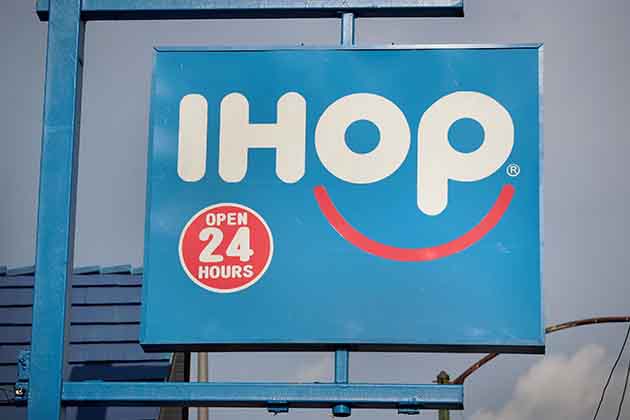
IHOP isn’t fairing very well in today’s market. It attempted a huge marketing scheme by saying it was going to change its name to “International House of Burgers” or IHOb, and that just caused a stir with Applebee’s. While IHOP deals with dropping sales, it’s now also embroiled in a lawsuit with Applebee’s.
In 2020, IHOP's parent company, Dine Brands Global, reported a decline in revenue and same-store sales due to the pandemic. In response, the company implemented cost-cutting measures and shifted its focus to off-premise dining and digital ordering. IHOP also introduced new menu items and promotions to attract customers, including a new line of burgers and a partnership with the popular food delivery app, Uber Eats.
Bed Bath & Beyond

We called it! When Bed Bath & Beyond started shutting down stores, it signaled the beginning of the end for this long-time home goods store. That's when we added it to this list. Now? They're going bankrupt. First, they shut down 60, then followed by another 41 more stores that closed for good. Now? All of the stores are kaput.
Customers complained that things were so expensive, but apparently, the chain couldn't even make overhead. The company filed for Chapter 11 bankruptcy and decided to shut down all stores by June 30th. The company just couldn't help but make bad decisions like buying its own stock, charging sky-high prices despite shrinking sales, and so much more.
Pier 1

Despite a bit of a turn-around, COVID-19 and existing debt hit Pier 1 pretty hard. The brand has been suffering from execution issues and problems from competition like Amazon and Wayfair. In February of 2020, Pier 1 filed for bankruptcy. By May, the brand decided to shut down all of its stores. Many blame the Coronavirus, and while that had a huge hit, Pier 1 has been struggling for a while. All 540 stores will shut down.
In addition to these challenges, Pier 1 faced criticism over its merchandise quality and pricing, as well as its lack of investment in digital channels and e-commerce capabilities. Despite efforts to restructure and stay afloat, including a potential sale to a private equity firm, Pier 1 was ultimately unable to recover. The company's bankruptcy marked the end of an era for the once-popular retailer and a reflection of the challenges facing brick-and-mortar retailers in the age of online shopping.
Walgreens

Starting in Fall 2019, Walgreens decided to close 200 stores while also dramatically cutting costs by 2022. All this comes on top of removing health insurance for a number of retirees and bonuses for store managers. Walgreens is responding to a massive 24% drop year-over-year in earnings. If it can’t pull itself out of the hole, it may not survive the coming years.
Walgreens has also been exploring new business opportunities, including expanding its healthcare services and partnering with other companies to offer new products and services. In 2020, the company announced a partnership with VillageMD to open primary care clinics in its stores, and it has also explored new partnerships with companies like Uber and Kroger.
Outback Steakhouse

Outback, Carrabba’s, and Bonefish Grill are all under Bloomin’ Brands, and all of them are struggling. People are now choosing healthier restaurants, and that makes it hard for chains like these to remain afloat. The company has been announcing losses of $4.3 million, so the plan is to close stores in the hopes that profits return.
In addition, Outback Steakhouse has invested in updating and remodeling its restaurants, with a focus on enhancing the customer experience and improving efficiency. The company has also expanded its menu to include more plant-based options and to cater to changing consumer preferences. Outback Steakhouse has also expanded its takeout and delivery options, and has launched a new loyalty program to reward and retain customers.
TGI Fridays

People aren’t going to TGI Fridays. As a result, the company has stopped growing and started closing stores. The company hoped to change its menu up a little and offer a few incentives, but it isn’t doing the trick. Shares are dropping, and it may not be much longer until it has to file for bankruptcy. In 2019, the company was acquired by Allegro Merger, but it may be too late.
Like many other restaurant chains, TGI Fridays faced significant challenges during the COVID-19 pandemic, including temporary closures, reduced capacity, and changes in consumer behavior. However, the company has taken steps to adapt and remain competitive in the market.
Abercrombie & Fitch

Abercrombie & Fitch has had a hard time adapting to the new market. Millennials are less interested in shirtless guys and more interested in ethical companies. A&F has consistently received bad press, and customers avoid them. This has led to huge drops in profits and significant revenue loss.
In response, the company has expanded its product offerings, including a greater focus on sustainable and ethical sourcing — at least, that's how they market it. Abercrombie & Fitch has also launched new marketing campaigns to reach a wider audience and promote its brand.
J. Crew

J. Crew has $1.7 billion in debt, and it’s struggling to pay it off. That’s mostly thanks to years of declining sales. On top of that, the CEO resigned in November after lasting only 17 months. J.Crew is having a hard time replacing them, possibly because everyone knows they’re about to go belly up.
To address these challenges, J.Crew has taken several steps to improve its financial position. The company has implemented cost-cutting measures, such as reducing its workforce and closing stores. J.Crew has also shifted its focus to e-commerce sales, investing in digital platforms and expanding its online offerings.
Academy

Walmart, Amazon, and sporting goods stores have made it tough for Academy to make a profit. It’s closed over 240 locations recently, and that doesn’t spell good news for the brand. In general, the market is pretty competitive.
In addition, Academy Sports + Outdoors has made strategic acquisitions to expand its market reach and product offerings. For example, in 2020, the company acquired certain assets of the now-bankrupt sporting goods retailer, Sports Authority.
Neiman Marcus

Luxury department stores are on their last legs. Neiman Marcus, in particular, reported positive sales and growth over the last five quarters, but that doesn’t make up for the years of losses. All that loss caused a significant amount of debt, something to the tune of $5 billion, and Neiman Marcus is having a hard time paying it off.
Neiman Marcus, the American luxury department store chain, filed for Chapter 11 bankruptcy in May 2020, citing the impact of the COVID-19 pandemic on its business. The company received $675 million in financing to support its operations during the bankruptcy process.
David’s Bridal

David’s Bridal may have just emerged from bankruptcy, but that doesn’t mean they’re immune from another. They shrunk their debt load by $450 million, but that doesn’t make up for falling sales. Brides nowadays are opting for casual wedding dresses over traditional gowns.
To improve its competitive position, David's Bridal has focused on enhancing its digital capabilities and improving the customer experience. The company has also expanded its product offerings to include more affordable and inclusive options, such as plus-size and maternity bridal gowns.
PetSmart

PetSmart is the largest pet retailer in the United States, but it may not last much longer. With sites like Amazon, PetSmart is having a hard time paying down debt while also making a notable profit. Growing competition may force this retailer to file for bankruptcy. In 2019, PetSmart bought e-commerce competitor Chewy, but that just weakened the company's financial position.
However, PetSmart has since taken steps to improve its financial position. In early 2021, the company refinanced $4.65 billion in debt, which reduced its annual interest expenses and extended the maturity of its debt. PetSmart has also made changes to its business strategy to better compete with online retailers. The company has expanded its e-commerce offerings and implemented curbside pickup and same-day delivery options to improve the customer experience.
CVS

CVS has begun closing stores all over the United States, including 50 locations in April alone. Overall, CVS reported a $421 million net loss for Q4 2018. Things didn’t get better as stocks fell dramatically earlier in the year.
CVS Health is a healthcare company that operates a retail pharmacy chain, a pharmacy benefits manager, and a healthcare services provider. In 2018, the company acquired health insurer Aetna for $69 billion, which significantly expanded its footprint in the healthcare industry. Unfortunately, the COVID-19 pandemic put a damper on their overall margins.
Lowe’s

Lowe’s is embroiled in a battle against Home Depot to stay away from bankruptcy. In an attempt to compete, the company purchased Orchard Supply Hardware. Immediately afterward, they were forced to lay off 4,000 employees and close 98 stores. The problem is that this acquisition cost much more than expected, which will require Lowe’s to make some major changes to stay away from bankruptcy.
Despite these challenges, Lowe's has reported strong financial results in recent quarters. In the second quarter of 2021, the company reported net sales of $27.6 billion, an increase of 1.0% compared to the same period in 2020. The company also reported a net income of $3.0 billion, an increase of 0.8% compared to the same period in 2020.
Subway

Subway franchisees have been complaining about the company for a while. Prices have been going up, food quality has been going down, and some stores are failing to stay afloat. Subway just can’t compete with other sandwich chains that offer better food at a better price.
Despite their best efforts, Subway has seen a decline in sales and store closures in recent years. According to reports, the company closed over 1,200 stores in the United States in 2020, and its total number of locations worldwide dropped from over 42,000 in 2019 to just over 37,000 in 2020.
Cheesecake Factory

Over the last couple of years, stocks for the Cheesecake Factory have begun to decline. Overall, the stock fell over 25% in the last year, and that’s a pretty steep decrease. Now, it’s beginning to close stores in once-profitable areas. The fact of the matter is that people just don’t want to go there anymore.
The Cheesecake Factory is a casual dining chain that operates over 200 restaurants in the United States and internationally. The company has been impacted by closures and reduced capacity restrictions during the pandemic, leading to a decline in sales and earnings.
Forever 21

Forever 21 announced in September 2019 that would have to file for bankruptcy. Along with this, it’s closing 350 stores worldwide, and ceasing operations in 40 countries, including Canada. The brand helped create the “fast fashion” trend, but it wasn’t enough.
Forever 21 emerged from bankruptcy in February 2020, having restructured its operations and reduced its debt. However, the COVID-19 pandemic hit shortly after, which impacted the company's sales and operations once again. In July 2020, Forever 21 announced that it would be closing an additional 13 stores, mostly in California. The company also shifted its focus towards e-commerce and reducing its physical footprint.
Rite-Aid

Rite-Aid wanted to merge with competitor Walgreens not too long ago, and part of that was because it was competing with CVS Health, too. Well, like many other stores in the same market, it’s not doing too well. The CEO stated the pharmacy was “acting with urgency” to change its trajectory, but recent projections aren’t looking too good.
Following the failed merger, Rite Aid faced declining sales and increasing debt, and the company has been working to restructure its operations and reduce costs. In 2019, Rite Aid announced plans to close approximately 600 stores, which represented around 20% of its total store count at the time. The company also implemented other cost-saving measures, such as reducing corporate staff and changing its supply chain processes.
GNC

This year, GNC has a plan to close as many as 1,200 stores, mostly due to the fact that the company hasn’t been profitable in a while. This is coming on top of closing 192 company-owned and franchised locations. It’s just easier to purchase your supplements and nutritional powders elsewhere – not to mention cheaper in many instances.
The company also secured financing to help it continue operating while it restructured its operations. In addition to its physical retail stores, GNC also operates an e-commerce business and sells products through third-party retailers. The company has been working to grow its online sales and improve its digital capabilities in order to compete with other online health and wellness retailers.
Ascena Retail

Ascena Retail may not sound familiar, but the brand owns Lane Bryant, Lou & Grey, Ann Taylor, and Catherines. Lately, the company has considered selling two of its chains, Lane Bryant and Catherines, in an attempt to stave off bankruptcy. For the first three quarters of last year, Ascena retail had losses totaling about $300 million while also owing creditors about $1.35 billion. Unless it gets some serious cash flow, it could be going under.
As part of its bankruptcy filing, Ascena Retail announced plans to close a significant number of its stores, including all of its Catherines stores and a significant number of its Justice stores. The company also worked to restructure its operations and reduce its debt in order to improve its financial position.
Dunkin’ Donuts

Everyone loves donuts, but apparently not as much as we used to. Dunkin’ Donuts just released a statement that they had to close 450 stores, most inside gas stations and outlet stores. The statement seemed to focus on the fact that Dunkin’ isn’t suffering, but rather looking to put these stores in better places.
These stores are set to close by the end of the year. The brand hasn’t yet declared bankruptcy but closing 450 isn’t a small number. While we would understand closing some inside of outlet stores, gas stations haven’t been closed during the pandemic. That means they didn’t see a dip in sales because of COVID-19.
Wendy’s

Wendy’s is another restaurant that’s closing a lot of stores. The same franchisee, NPC International, that owned 1,200 Pizza Huts also owned 400 Wendy’s locations. Because of this, these 400 Wendy’s locations are shutting down in the same 27 states.
Considering there are over 6,700 Wendy’s locations, the brand won’t see a huge dent in profits. Some people will just have to drive a little farther for their Baconator. The bankruptcy comes after state-wide shutdowns from the COVID-19 crisis.
WeWork

WeWork, a pioneering office-sharing company, unexpectedly filed for Chapter 11 bankruptcy protection at the end of 2023, a severe setback for the once-dominant disruptor of global workplace relations. WeWork, founded in 2010, rose to prominence by offering flexible and collaborative offices, but its ambitious development and financial mismanagement resulted in its sudden decline.
The company's exorbitant expenditure, combined with a failed initial public offering (IPO) in 2019, resulted in a massive debt load and diminishing investor trust. WeWork's struggle to remain profitable and adapt to new work practices, aggravated by the COVID-19 pandemic's impact on office usage, has brought the once-thriving brand close to bankruptcy.
Jenny Craig

Jenny Craig, one of the most well-known weight loss chains in America, has experienced a significant setback after filing for Chapter 7 bankruptcy in May of 2023. This is a big development for the firm because it signals that it will no longer engage in its normal operations and will instead focus on selling its assets in a piecemeal manner as a strategic move.
Jenny Craig, which was once known for its brick-and-mortar weight loss centers, has opted to make a complete shift and embrace a fully online presence and customer base. The decision to postpone the reopening of its physical weight loss facilities reflects both tectonic shifts in customer tastes and ongoing transformations in the health and wellness industry.
Armstrong Flooring

In a financial downturn, Armstrong Flooring, a well-known flooring company, sought safety by filing for Chapter 11 bankruptcy in May of 2022. The corporation, facing a perfect storm of issues, cited supply chain disruptions, inflationary pressures, and the long-term effects of the COVID-19 pandemic as major factors to its financial woes.
As of 2023, Armstrong had arround $500 million in assets but roughly $300 million in liabilities. The significant disparity between assets and liabilities highlights the seriousness of the company's financial difficulties. Supply chain disruptions and inflationary dynamics, worsened by the pandemic's widespread effects, are likely to have interrupted manufacturing, raised expenses, and impeded Armstrong Flooring's income streams.
JoAnn Fabric and Crafts

JoAnn Fabric and Crafts, commonly known as JOANN Stores had a CreditRiskMonitor FRISK Score of 1 in 2023, indicating a high likelihood of bankruptcy. Despite a jump in sales during the pandemic, the company has struggled to maintain momentum, resulting in a 2.1% decline in net sales and a deeper net loss in the second quarter of 2023.
With over $1 billion in debt and rising interest costs, JOANN is implementing cost-cutting measures, including layoffs, to navigate its difficult financial environment. The retailer's financial troubles coincide with leadership changes, with no CEO appointed following Wade Miquelon's retirement. While JOANN maintains confident about its survival, rising obstacles add to an uncertain future, with the potential of bankruptcy looming in the coming months.
Big Lots

The FRISK score for Big Lots from Credit Risk Monitor is 2, indicating a bankruptcy risk ranging from 4% to 9.99%. The organization acknowledges the importance of the situation and is taking initiatives to overcome these challenges and remain competitive in the industry. Big Lots' $94.4 million loss and 15.4% drop in last years second-quarter same-store sales suggest a declining consumer base.
During the earnings call, CEO Bruce Thorn discussed the company's issues. Despite its bleak financial outlook, Big Lots is aggressively cutting expenses and improving performance. The retailer's fate, and it's many employee's fates is in the balance as it attempts to turn its fortunes around and avoid financial ruin.
"For the past year and a half, we've been playing defense as the consumer environment quickly and sharply deteriorated," he said. "High inflation has disproportionately impacted our lower-income customers, who have delayed or pulled back spending on discretionary items, particularly in high ticket home and seasonal categories, which were already challenged by the post-COVID spend shift away from home categories."
- CEO Bruce Thorn
Express

Express, a big mall-based clothing store, is struggling financially and on the verge of bankruptcy as a result of post-COVID adjustments. The company's second-quarter report shows a 6.4% decrease in net sales to $435.3 million, along with rising administrative expenses and a continuous growth in debt to $220.8 million. According to Creditsafe data, 35% of owing payments are delayed, totaling over $3 million.
A perfect storm has been created for Express as a result of the gradual depletion of cash reserves and the increasing debt, as well as the influence of remote work and the shifting behaviors of consumers. As rumors of a bankruptcy continue to circulate, experts have advised them to take prompt action, such as reducing expenses and investing in technological advancements.
Foot Locker

Foot Locker has revealed plans to eliminate 400 North American stores by 2026, with an emphasis on eliminating underperforming mall locations and enhancing standalone stores with innovative concepts. The company's "Lace Up" initiative, centered on sneakers, underscores its commitment to attracting new consumers with a specialized focus.
Despite the cutbacks, Foot Locker marked its 50th anniversary in 2023 by opening 280 community-centric, power store, and house of play concept stores. The strategy calls for the closure of 125 Champ Sports locations by 2023, with the brand focusing more on active sports and fitness aficionados. Foot Locker's global real estate footprint is expected to drop by 10% by 2026, leaving the company with 2,400 locations.
Tuesday Morning

Tuesday Morning, a Dallas-based home goods store, has filed for Chapter 11 bankruptcy protection, marking the second time in three years. The first bankruptcy was filed in May 2020, during a difficult time due to the COVID-19 epidemic. The company's choice to file for bankruptcy again in February 2023 indicates that financial difficulties will persist, probably exacerbated by the pandemic's long-term impact and larger economic concerns.
It is because of the complexities of the retail market, Tuesday Morning wants to handle its financial challenges through reorganization. This decision highlights the ongoing challenges that certain organizations face in adapting to and recovering from ever-changing market conditions. Tuesday Morning's two bankruptcy in three years highlight the company's ongoing struggles, and the the severe obstacles in the retail sector's post-pandemic recovery.
The Container Store

As on the most recent financial report, The Container Store Group has a 42.0% probability of bankruptcy, indicating a high danger of financial trouble. This value is equal to the Specialty Retail sector average of 41.39, but is 56.6% higher than the Consumer Discretionary industry average. Despite ongoing initiatives including trying smaller store designs and extending Custom Spaces options, the company has struggled to achieve traction.
The Container Store is on the Retail Dive bankruptcy watch list, which raises concerns about its financial viability. The Store's considerable risk of bankruptcy, along with its difficulty generating traction, raises questions about the company's financial health and future prospects. They have stepped up, though and are optimistic about their future in retail.
Ford Motor
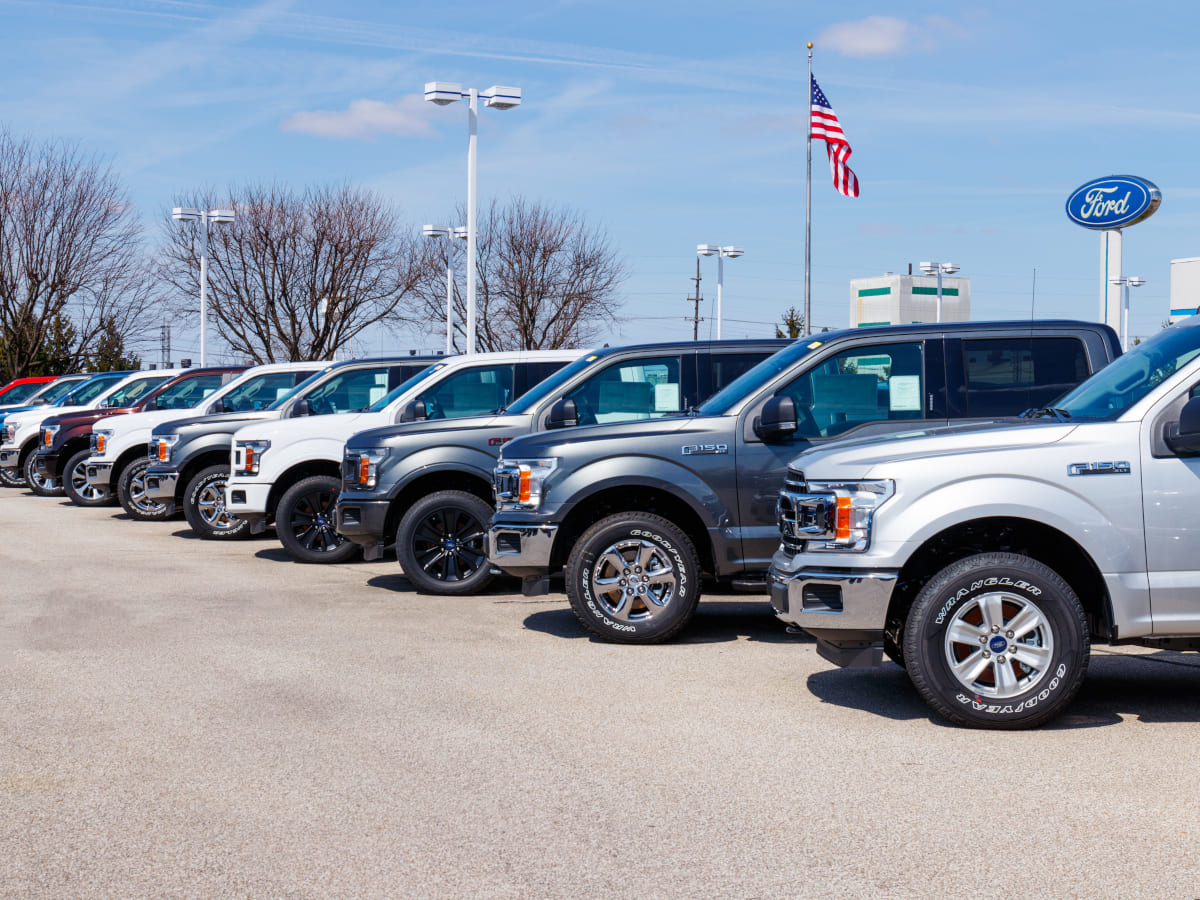
Ford Motor business CEO Jim Farley has expressed alarm over the United Auto Workers (UAW) union's plan, which includes a 40% salary rise, shorter workweeks, and increased pension benefits, claiming it might drive the business into bankruptcy. During a CNBC interview, Farley emphasized the potential negative repercussions, claiming that if these rules had been in place since 2019, Ford would have suffered enormous losses, compromising its financial health and possibly leading to bankruptcy.
In reaction to the UAW's plan, Farley accused the union of pressuring Ford into bankruptcy rather than supporting its workers. He stated that there are currently no talks or negotiants in progress and that the company has not received any counteroffers. Farley depicted a bleak financial future for the automotive giant.
V. Galactic (SPCE)

V. Galactic confronts substantial financial issues, with its stock completing the first day at $11.93, up from an introductory price of $2, representing a turbulent voyage. Despite its V. Unity spacecraft, which offers space tourism for $454,000 each trip, founder Richard Branson's company has suffered losses, negative cash flow, and a turbulent past, including the bankruptcy of V. Orbit.
V. Galactic's (SPCE) present probability of bankruptcy exceeds 80%, indicating a substantial likelihood of financial trouble. With Branson signaling a halt to additional investments and the company's limited financial resources post-COVID, V. Galactic's future appears perilous. Branson's admission of low resources and a probability of bankruptcy surpassing 80% signals a difficult path ahead for V.Galactic, increasing concerns about the company's financial viability.
 Author
Rachel Downs
Last Updated: March 04, 2024
Author
Rachel Downs
Last Updated: March 04, 2024

